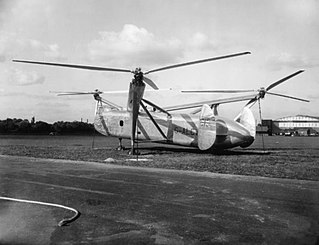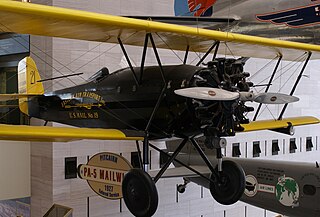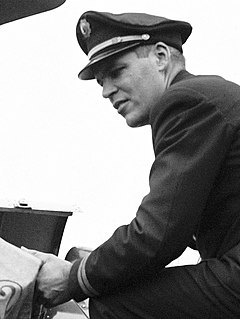 | |
 | |
| Industry | Aerospace |
|---|---|
| Founded | 1929 |
| Founder | W. Wallace Kellett |

The Kellett Autogiro Corporation was an American aircraft manufacturer from 1929 based in Philadelphia, named after founder W. Wallace Kellett.
 | |
 | |
| Industry | Aerospace |
|---|---|
| Founded | 1929 |
| Founder | W. Wallace Kellett |

The Kellett Autogiro Corporation was an American aircraft manufacturer from 1929 based in Philadelphia, named after founder W. Wallace Kellett.
The Kellett Aircraft was formed by W. Wallace Kellett and C. Townsend Ludington and their brothers, Rodney Kellett and Nicholas Ludington. In 1931, Kellett Autogiro licensed, from the Autogiro Company of America, Juan de la Cierva's and Harold Pitcairn's patents for rotary-wing aircraft. [1] The first three designed were all typical Cierva designs and the more advanced KD-1 was similar to the contemporary Cierva C.30. The KD-1/G-1 was the first practical rotary-wing aircraft used by the United States Army. The company stopped building autogyros in the late 1940s and switched to the design of helicopters. In the 1950s it built some ultra-light helicopters the RH-1 to test some rotor features and its last design the K-25 was an experimental convertiplane using tilt-rotors.
| Model name | First flight | Number built | Type |
|---|---|---|---|
| Kellett K-2 | 1931 | 12 | Utility autogyro |
| Kellett K-3 | 4-6 | Re-engined version of K-2 | |
| Kellett K-4 | 1 | Re-engined version of K-2 | |
| Kellett KD-1 | 1934 | Utility autogyro | |
| Kellett XR-8 | 1944 | 2 | Single engine intermeshing rotor prototype military helicopter |
| Kellett XR-10 | 1947 | 2 | Twin engine intermeshing rotor prototype military helicopter |
| Kellett KH-15 [2] | 1954 | Flying platform | |
| Kellett K-25 [3] | Twin engine convertiplane | ||

An autogyro, also known as a gyroplane, is a type of rotorcraft that uses an unpowered rotor in free autorotation to develop lift. Forward thrust is provided independently, by an engine-driven propeller. While similar to a helicopter rotor in appearance, the autogyro's rotor must have air flowing across the rotor disc to generate rotation, and the air flows upwards through the rotor disc rather than down.

Juan de la Cierva y Codorníu, 1st Count of la Cierva was a Spanish civil engineer, pilot and a self taught aeronautical engineer. His most famous accomplishment was the invention in 1920 of a rotorcraft called Autogiro, a single-rotor type of aircraft that came to be called autogyro in the English language. In 1923, after four years of experimentation, De la Cierva developed the articulated rotor, which resulted in the world's first successful flight of a stable rotary-wing aircraft, with his C.4 prototype.

A gyrodyne is a type of VTOL aircraft with a helicopter rotor-like system that is driven by its engine for takeoff and landing only, and includes one or more conventional propeller or jet engines to provide forward thrust during cruising flight. During forward flight the rotor is unpowered and free-spinning, like an autogyro, and lift is provided by a combination of the rotor and conventional wings. The gyrodyne is one of a number of similar concepts which attempt to combine helicopter-like low-speed performance with conventional fixed-wing high-speeds, including tiltrotors and tiltwings.

A rotorcraft or rotary-wing aircraft is a heavier-than-air aircraft with rotary wings or rotor blades, which generate lift by rotating around a vertical mast. Several rotor blades mounted on a single mast are referred to as a rotor. The International Civil Aviation Organization (ICAO) defines a rotorcraft as "supported in flight by the reactions of the air on one or more rotors".

The Pitcairn OP-1 was the first rotary-wing aircraft to be seriously evaluated by any of the world's major air forces. The machine was not a helicopter, nor an airplane, but an autogyro. Pitcairn's model was never put into production for any military.

The Cierva W.11 Air Horse was a helicopter developed by the Cierva Autogiro Company in the United Kingdom during the mid-1940s. The largest helicopter in the world at the time of its debut, the Air Horse was unusual for using three rotors mounted on outriggers, and driven by a single engine mounted inside the fuselage.

The Fairey FB-1 Gyrodyne is an experimental British rotorcraft that used single lifting rotor and a tractor propeller mounted on the tip of the starboard stub wing to provide both propulsion and anti-torque reaction.
The Cierva Autogiro Company was a British firm established in 1926 to develop the autogyro. The company was set up to further the designs of Juan de la Cierva, a Spanish engineer and pilot, with the financial backing of James George Weir, a Scottish industrialist and aviator.

Harold Frederick Pitcairn was an American aviation inventor and pioneer. He played a key role in the development of the autogyro and founded the Autogiro Company of America. He patented a number of innovations relating to rotary wing aircraft.

The Cierva C.8 was an experimental autogyro built by Juan de la Cierva in England in 1926 in association with Avro. Like Cierva's earlier autogyros, the C.8s were based on existing fixed-wing aircraft fuselages – in this case, the Avro 552.

The American Helicopter Museum & Education Center (AHMEC) is located at 1220 American Boulevard, West Chester, Pennsylvania, United States. The transport museum focuses on the history, science and technology of rotary wing aviation. The collection contains over 40 civilian and military, autogyros, convertiplanes and helicopters, including some early generation models. The museum also has an extensive research library, the Renzo Pierpaoli Memorial Library, which contains documents, artifacts, films, and memoirs that museum members can use.

The Kellett KD-1 was a 1930s American autogyro built by the Kellett Autogiro Company. It had the distinction of being the first practical rotary-wing aircraft used by the United States Army and inaugurated the first scheduled air-mail service using a rotary-wing aircraft.

The Kellett K-2 was a two-seat autogyro developed in the United States in the early 1930s. Later examples were designated K-3 and K-4 when equipped with more powerful engines. K-3 NC 12691 is seen in the 1934 movie, It Happened One Night.

The Pitcairn PCA-2 was an autogyro developed in the United States in the early 1930s. It was Harold F. Pitcairn's first autogyro design to sell in quantity. It had a conventional design for its day – an airplane-like fuselage with two open cockpits in tandem, and an engine mounted tractor-fashion in the nose. The lift by the four-blade main rotor was augmented by stubby, low-set monoplane wings that also carried the control surfaces. The wingtips featured considerable dihedral that acted as winglets for added stability.

The Autogiro Company of America AC-35 was an early attempt to make a roadable aircraft in the United States during the 1930s. Although it was successfully tested, it did not enter production; a 1960s attempt to revive the aircraft in a non-roadable version also failed to achieve success.

The Pitcairn Aircraft Company was an American aircraft manufacturer of light utility aircraft. An early proponent of the autogyro, the company, later known as the Autogiro Company of America among other names, remained in business until 1948.

William Wallace Kellett was an American aircraft executive and manufacturer, especially associated with rotary-wing aircraft. He was president of Kellett Autogiro Corporation and Republic Aviation Corporation. His company constructed the first successful wingless aircraft in the United States. There was a wide variety of potential users for his unique airplane. The first autogyro airplane used by the United States Post Office Department to carry mail was produced by Kellett. He received congressional approval for funding such a project after he gave senators and representatives demonstration flights of his wingless autogyro aircraft as part of a promotion in Washington D.C.
Camden Central Airport was an airport in Pennsauken Township, Camden County, New Jersey, United States. It had its peak of activity in the 1930s, serving as the main airport for the neighboring city of Philadelphia, Pennsylvania.

John MacDonald Miller was a barnstorming pilot, the first person to make a US transcontinental flight in a rotorcraft, the first to land a rotorcraft on the roof of a building, and the first to fly a scheduled US mail rotorcraft service. He was also a test pilot and airline captain. He became the oldest active pilot in the US, making his first flight on his 18th birthday and ending at the age of 101. He died aged 102.